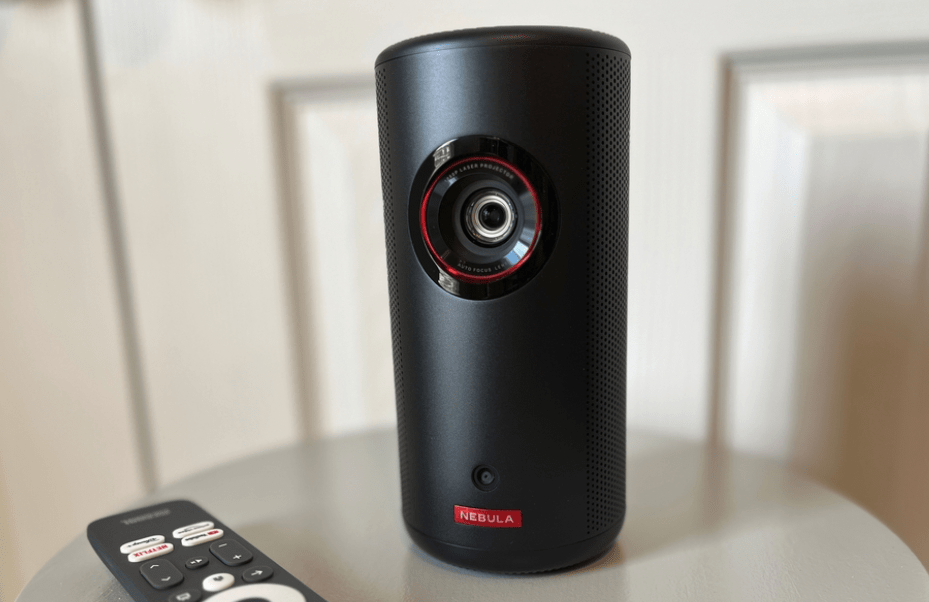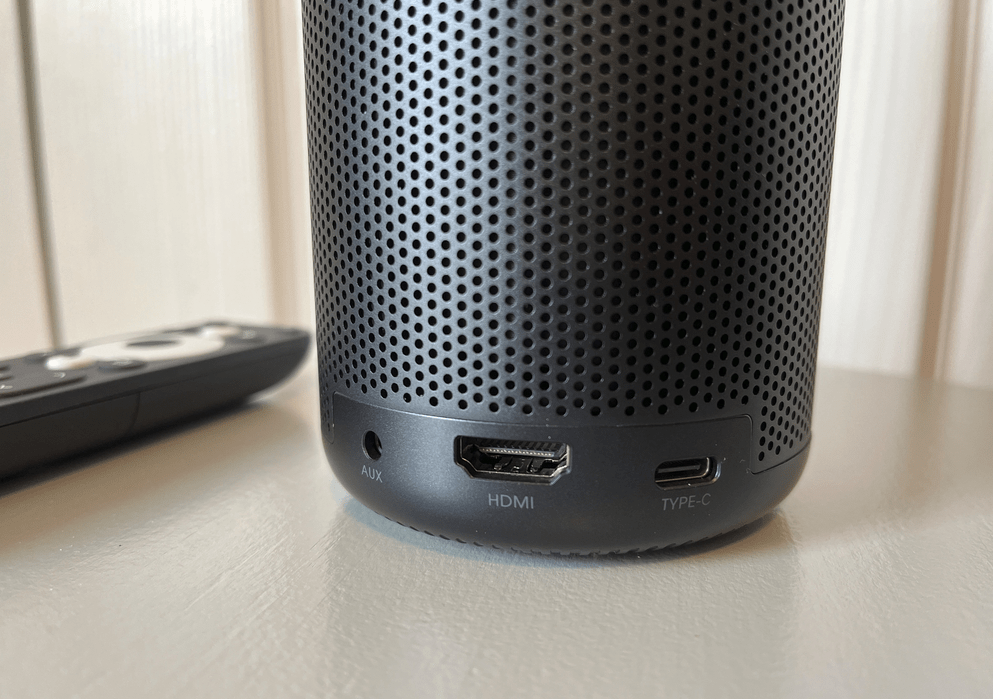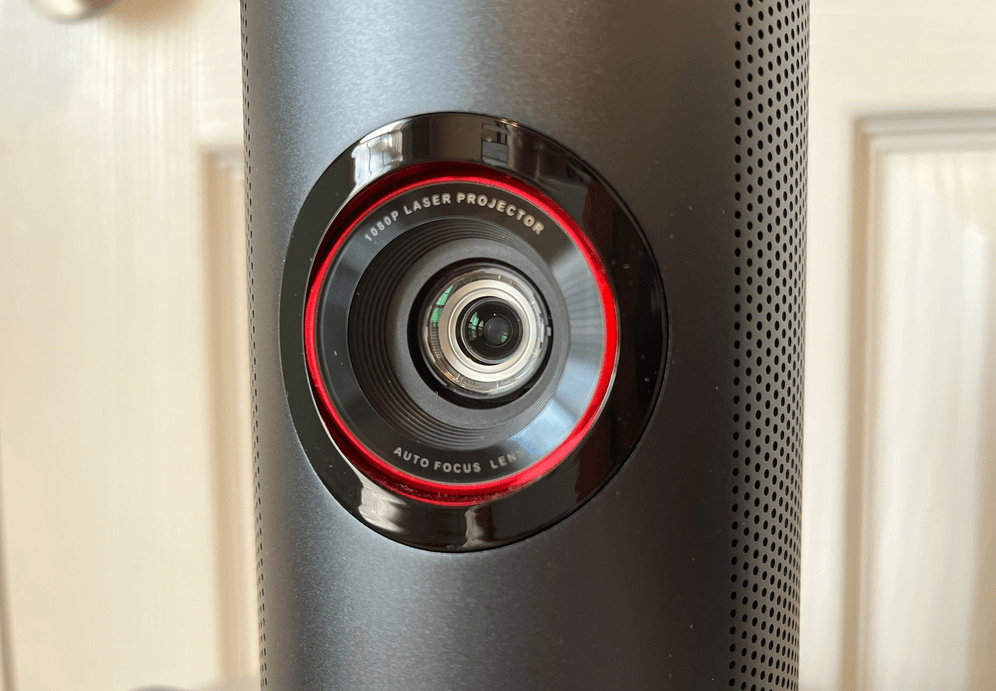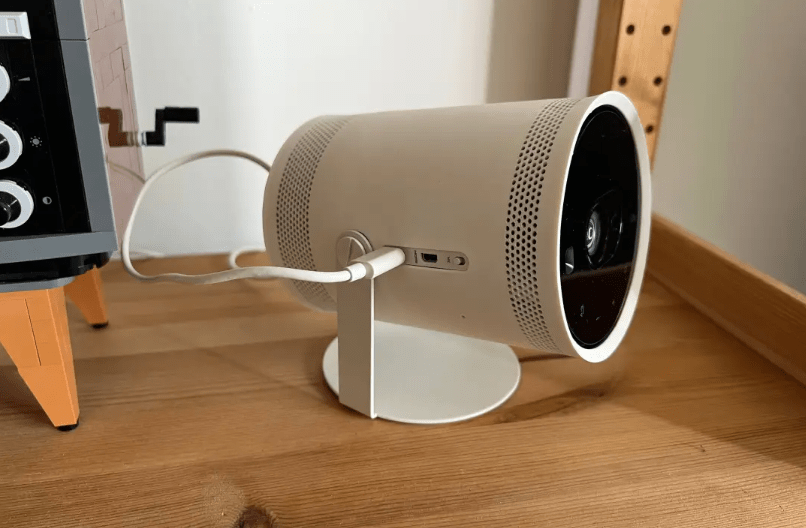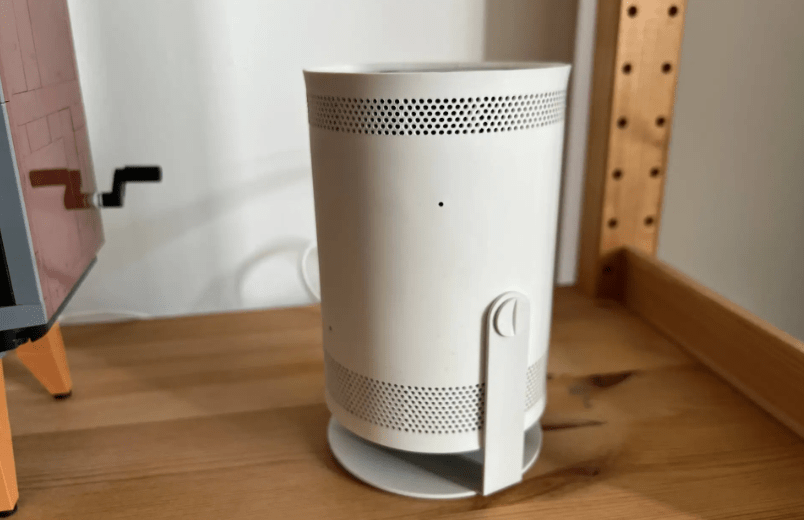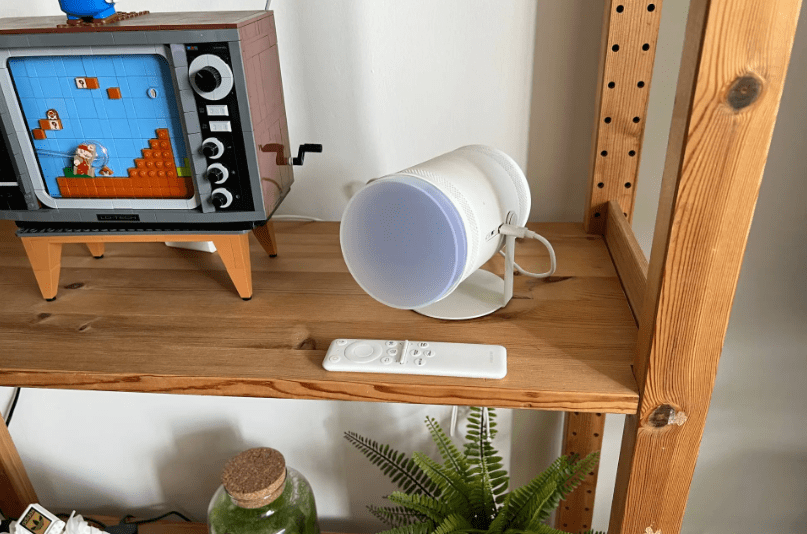At gagadget.com, your trust is our priority. We follow strict quality standards in our research, tests, and analysis of video projectors, to give you the best experience. Learn more
Nebula Capsule 3 vs Samsung Freestyle: Comparison
Hey everyone, Jim's here. Today, I'm comparing two of the hottest portable projectors on the market: the Nebula Capsule 3 and the Samsung Freestyle. Both offer full HD resolution, auto keystone and focus, built-in streaming apps, and the ability to point and play nearly anywhere. But they also have some key differences in brightness, battery life, smart features, and design.
I've spent quality time with both projectors, evaluating image quality, ease of use, sound performance, and overall portability. In this head-to-head shootout, I'll break down how the Capsule 3 and Freestyle compare and help you decide which one is worth your hard-earned cash. Let's dive in!
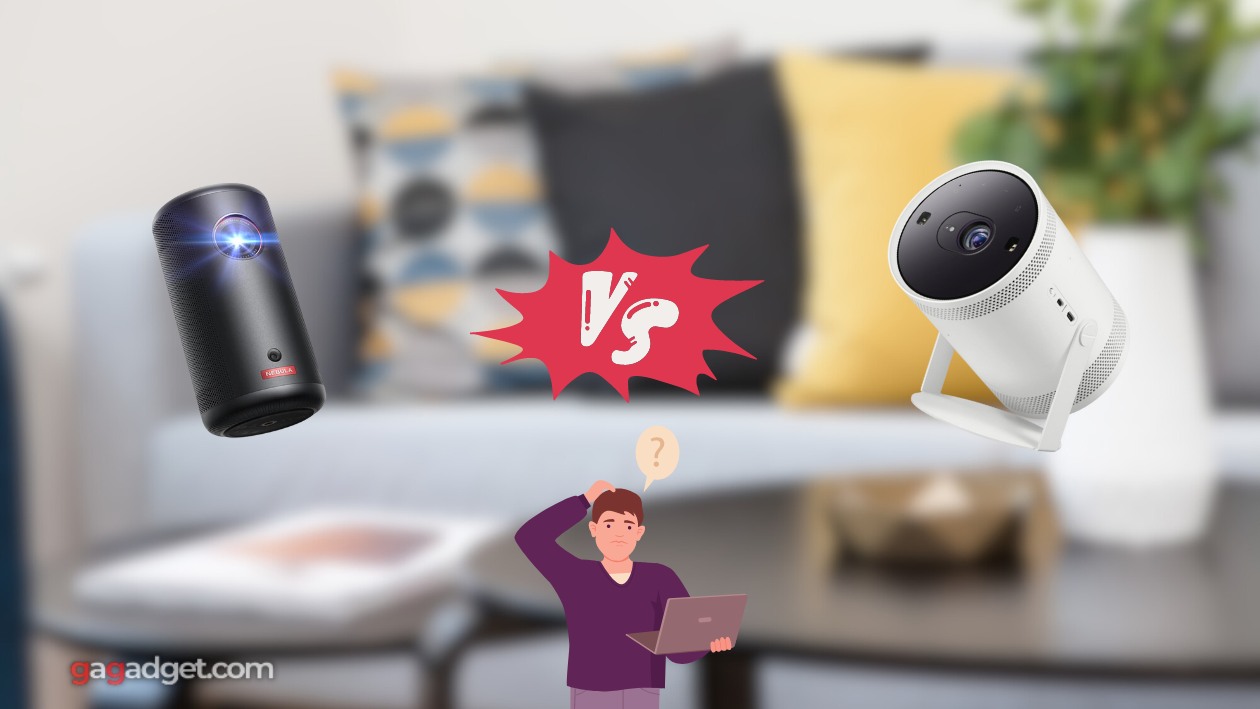
Nebula Capsule 3 vs Samsung Freestyle: Quick Overview
If you're short on time, here are the main talking points: The Nebula Capsule 3 and Samsung Freestyle are both highly portable 1080p DLP projectors with auto keystone correction, autofocus, and built-in streaming apps. They share a similar "point and play" design philosophy but the Freestyle takes it a step further with its unique 180° cradle stand. The Capsule 3 fires back with an integrated battery good for 2.5 hours of playback, higher 200 ANSI lumen brightness, and wider 90% DCI-P3 color gamut coverage. It also has slightly more powerful 8W speakers vs the Freestyle's 5W.
In my opinion, the Freestyle is the slicker overall package with its lighter weight, 180° flexibility, brighter LED, and Samsung smart TV features. But the Capsule 3's battery, Dolby Digital sound, and lower price make it a compelling alternative for those who want maximum portability and playtime. It really comes down to your specific needs and budget.
Table of Contents
- Nebula Capsule 3 vs Samsung Freestyle: Full Comparison
- Freestyle or Capsule 3: Design
- Capsule 3 vs Freestyle: Owner Reviews
- Nebula Capsule 3 and Samsung Freestyle Alternatives
- Should You Buy the Nebula Capsule 3 or Samsung Freestyle?
Nebula Capsule 3 vs Samsung Freestyle: Full Comparison
| Specs | Nebula Capsule 3 | Samsung Freestyle |
| Image |

|

|
| Resolution | 1920 x 1080 (Full HD) | 1920 x 1080 (Full HD) |
| Brightness | 200 ANSI lumens | 550 LED lumens (approx. 100-200 ANSI) |
| Light Source | LED | LED |
| Color Gamut | 90% DCI-P3 | Not specified |
| Autofocus | Yes | Yes |
| Auto Keystone | Horizontal & vertical | Horizontal & vertical |
| Throw Ratio | Not specified | 1.22 |
| Image Size | 40" - 120" | 30" - 100" |
| Built-in Battery | Yes (2.5 hours) | No |
| Smart TV | Android TV 11, Google Assistant | Tizen OS, Bixby, Alexa |
| Connectivity | HDMI, USB, Wi-Fi | HDMI, USB, Wi-Fi |
| Built-in Speaker | 8W mono with Dolby Digital | 5W with 360° sound |
| Release Date | 2023 | 2022 |
On paper, the Nebula Capsule 3 and Samsung Freestyle are very evenly matched. Both pack 1080p resolution, LED illumination, auto keystone and focus, and integrated streaming into highly portable designs. In practice, I found each has its own particular strengths and weaknesses.
Let's start with brightness, arguably the most important metric for a projector. The Capsule 3 is rated at 200 ANSI lumens, a 25% jump from the previous Capsule II model. That's enough to produce a vibrant and colorful image up to 100 inches in a dark room. It even holds up reasonably well with some ambient light, though you'll want to keep the image size under 60 inches.
The Freestyle is a bit harder to pin down luminance-wise. Samsung quotes 550 LED lumens but doesn't provide an ANSI measurement. In my experience, that translates to roughly 150-200 ANSI lumens in real-world use. It's perfectly bright for nighttime viewing up to 100 inches but not quite as punchy as the Capsule 3 in moderately lit environments. The Freestyle's higher 1,500:1 contrast ratio does help it maintain solid black levels and shadow detail.
Where the Capsule 3 pulls ahead is color performance. Its LED light source covers an impressive 90% of the wide DCI-P3 gamut, approaching what you'd see on a good 4K TV. Hues look rich and saturated without appearing artificial or oversaturated. The Freestyle's color space isn't specified but to my eyes it presented as a typical Rec.709 projector - natural and accurate but not as vibrant as the Capsule 3.
Both projectors feature automatic keystone correction and focus, a huge boon for quick and easy setup. During my testing, I was able to point them at a variety of surfaces - walls, ceilings, floors, sheets - and get a squared, crisp image in seconds. The Freestyle is slightly faster and more reliable thanks to its unique 180° cradle design, which also allows for more creative positioning. But the Capsule 3's system is no slouch and plenty precise for most situations.
On the sound front, the Capsule 3 boasts an 8-watt mono speaker with Dolby Digital decoding. It's surprisingly loud and full for the size, able to fill a small to medium room without distortion. Dialogue is clear, effects have decent impact, and there's even a hint of bass. The Freestyle's 5-watt driver isn't as powerful but makes up for it with 360° projection for more immersive audio. Both are fine for casual viewing but I'd recommend an external speaker or soundbar for movies.
Battery life is one area where the Capsule 3 handily beats the Freestyle. With a built-in 52Wh battery, it can play for up to 2.5 hours on a single charge - enough for an average movie or a few episodes. The Freestyle has no integrated battery, relying solely on AC power. You can jury-rig a USB-PD battery pack but it's not as elegant or long-lasting as the Capsule 3's all-in-one solution.
Smart features are robust on both projectors but with different flavors. The Capsule 3 runs a customized version of Android TV 11 with Google Assistant voice commands and Chromecast built-in. The interface is snappy and intuitive, with most major streaming apps supported. The Freestyle uses Samsung's Tizen OS with Bixby and Alexa smarts. It's not as slick as Google TV but still covers all the basics. You also get Samsung-exclusive tricks like smartphone mirroring and an ambient art mode.
Where the Freestyle tips the scales is ecosystem integration. If you already own a Galaxy phone or other Samsung appliances, it slots right into that family with SmartThings app control and Q Symphony sound sharing. It's also the only projector certified for Samsung's gaming hub, letting you stream titles from Xbox Game Pass and Nvidia GeForce Now. The Capsule 3 is more of a standalone device, though its Netflix certification is a nice feather in its cap.
Freestyle or Capsule 3: Design
Placed side by side, the Nebula Capsule 3 and Samsung Freestyle couldn't look more different. The Capsule 3 has a traditional "soda can" design with a cylindrical body, perforated speaker grille, and a lens that protrudes about an inch from the front. The Freestyle looks like an oversized desk lamp with its rounded rectangular head, pivoting cradle stand, and mesh fabric wrap.
Nebula Capsule 3 Design:
Samsung Freestyle Design:
Both are undeniably portable but the Freestyle is the clear winner for pocketability. At 3.7 x 4.1 x 6.8 inches and 1.83 pounds, it's roughly 30% smaller and lighter than the Capsule 3. The Freestyle easily fits in a purse, laptop bag, or large coat pocket while the Capsule 3 is more of a pack-and-go device.
The Freestyle's size advantage is even more impressive when you consider its 180° hinge and cradle base. This allows you to point the projector in virtually any direction - up, down, sideways, even at the ceiling - without a tripod or stand. It's a revelatory level of flexibility that opens up all sorts of creative placement options. Wall, floor, table, tent, tree branch... if you can aim it, you can project on it.
The Capsule 3 is much more limited in its positioning. You can set it on a flat surface or mount it to a tripod but vertical angles are off-limits without a special stand. The 8-point keystone correction helps compensate somewhat but you're still confined to a relatively narrow range in front of the lens.
Controls are minimal on both projectors, befitting their streamlined designs. The Capsule 3 has four buttons on its top (two for volume, one for power, one for mode switching) and a joystick-like controller on the side for menu navigation. The Freestyle keeps things even simpler with just a power key and a multipurpose toggle for settings.
Connectivity is nearly identical, with a single HDMI port and a USB-C jack for power or media playback. The Capsule 3 adds a welcome headphone/audio output for connecting external speakers. Both support Bluetooth and dual-band Wi-Fi for cable-free streaming and control.
While neither projector is particularly loud, the Freestyle has a slight edge in fan noise thanks to its larger, more spaced-out chassis. The Capsule 3's fans have to work harder to expel heat from its compact body, resulting in a soft but constant hum. It's not distracting in most viewing scenarios but is noticeable in quiet passages.
Build quality is reassuringly sturdy on both models. The Capsule 3's aluminum and plastic shell feels solid, with no concerning rattles or creaks. The Freestyle's soft-touch fabric and high-gloss plastic are equally premium and get extra points for repelling dust, lint, and fingerprints. I wouldn't call either projector rugged but they should easily withstand normal travel wear and tear.
Capsule 3 vs Freestyle: Owner Reviews
So what do real buyers think of the Nebula Capsule 3 and Samsung Freestyle? Here's a sampling of user impressions:
Nebula Capsule 3 Owner Reviews:
Praises: "The Capsule 3's picture quality is outstanding for the size. 1080p resolution and 200 ANSI lumens make for a crisp, colorful image even at 100 inches. It's a huge upgrade from the 720p Capsule II."
"Built-in Android TV and Google Assistant are game-changers. I can access all my favorite streaming apps and control the projector with just my voice. No extra devices needed!"
***
Drawbacks: "Battery life is decent at around 2 hours but doesn't quite last a full movie. I usually need to plug in towards the end, which kind of defeats the portable appeal."
"The auto keystone and focus are usually spot-on but occasionally get confused by complex patterns or textures. Manual adjustments are a bit fiddly with the joystick remote."
Samsung Freestyle Owner Reviews:
Praises: "The Freestyle's 180° stand is revolutionary. I can point it at any wall, ceiling, or surface and get a perfectly aligned image in seconds. It's like having a big screen TV anywhere I want."
"The LED brightness and contrast are excellent for such a small projector. I'm getting vibrant colors and deep blacks up to 100 inches, even with some lights on. The auto brightness is a nice touch."
***
Drawbacks: "No built-in battery is a real bummer for a 'portable' projector. You're still tethered to an outlet, which limits placement options. A USB-C power bank works in a pinch but runtime is short."
"The Tizen smart TV platform gets the job done but feels clunky next to Google TV or Roku. App selection is decent but several of my niche streaming services are missing."
Reading through owner reviews, it's clear that both projectors largely deliver on their ultra-portable, big screen anywhere promises. Users rave about the sharp 1080p pictures, punchy colors, and convenient smart TV interfaces. The Capsule 3 gets extra praise for its battery and Dolby audio while the Freestyle amazes with its unique form factor and instant auto setup.
Common complaints include middling onboard sound, occasionally finicky auto correction, and smart platforms that aren't quite as robust as dedicated streaming sticks. Freestyle buyers are understandably miffed about the lack of a battery while some Capsule 3 users wish the runtime stretched closer to 3 hours. But the overall reception is highly positive, with most folks feeling they got their money's worth and then some.
Nebula Capsule 3 and Samsung Freestyle Alternatives
If neither the Capsule 3 nor the Freestyle ticks all your boxes, here are two other portable 1080p projectors to consider:
- XGIMI Halo+: A versatile Android TV model with 900 ANSI lumens, HDR10, 2 hours of battery life, and robust audio in a 3.5-pound package;
- BenQ GV30: A stylish and compact 720p projector with a tilting hinge design, 300 LED lumens, 2.1 channel sound, and 2.5-hour battery.
The XGIMI Halo+ is a portable powerhouse, boasting 900 ANSI lumens, HDR10 support, and a 59Wh battery good for 2+ hours of wireless playback. It also has a novel built-in gimbal that automatically corrects the picture when you move the projector. Chromecast and Google Assistant are onboard, as is an HDMI port for external players.
Aiming for maximum portability, the BenQ GV30 crams 720p resolution, 300 LED lumens, and Android TV into an cute 4.2 x 5.3 x 5.4 inch frame. The 135° tiltable hinge and drop-down mirror lens provide Freestyle-esque placement flexibility. You also get surprisingly potent 4W speakers with aptX support and a USB-C port for powering streaming sticks.
Should You Buy the Nebula Capsule 3 or Samsung Freestyle?
After extensive hands-on time with the Nebula Capsule 3 vs Samsung Freestyle, I can confidently say they're two of the most exciting and capable portable projectors on the market. With their grab-and-go designs, smart TV brains, instant setup, and impressive picture quality, both are rewriting the rules of when, where, and how we can enjoy big screen entertainment. While not without compromises, they deliver a genuinely liberating viewing experience you simply can't get from a TV.
For most people, I give the overall nod to the Samsung Freestyle. Its ultra-compact size, 180° projection, brighter LED, and slick auto correction make it uniquely suited to impromptu movie nights, dorm room gaming, outdoor gatherings, and creative applications. The lack of a battery stings but a compact USB-C power bank mostly offsets that limitation. And if you're already in the Samsung ecosystem, the Freestyle integrates beautifully with Galaxy phones, SmartThings gear, and even select Samsung TVs.
That said, the Nebula Capsule 3 remains a stellar pick for those who prioritize all-in-one portability. The built-in 2.5-hour battery, wider color gamut, and superior Dolby audio are significant advantages over the Freestyle. I also slightly prefer Android TV to Tizen for its speed, app selection, and Chromecast support. And at $200 less than the Samsung, the Capsule 3 arguably offers better bang for the buck.
Ultimately, you can't go wrong with either projector for big screen thrills on the go. The Nebula Capsule 3 and Samsung Freestyle both punch well above their weight, delivering a truly cinematic viewing experience that fits in a backpack. If you're willing to sacrifice a bit of brightness and battery life for the ultimate in portability and placement flexibility, get the Freestyle. If you want the best possible picture, sound, and runtime in a still travel-friendly package, snag the Capsule 3.
Thanks for reading! Let me know if you have any other questions about the Nebula Capsule 3, Samsung Freestyle, or portable projectors in general. Here's to your next big screen adventure, wherever it takes you!
Go Deeper:
